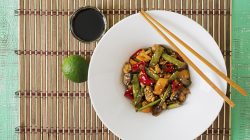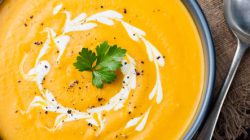Fermentation: Why This Trend Makes Us Happy
Everybody’s talking about fermentation – from rock-star chefs to home cooks. In fact, Chicago-based Chef Rick Bayless predicts “fermentation is going to be very in-demand in 2013. This pickling cooking technique delivers sour flavors that demonstrate an evolution of the American taste. Do-it-yourself sauerkraut and kimchi make for delicious toppings for tacos or even burgers1.” At Nikken we consider ourselves on the cutting edge of culinary trends so it’s only natural for us to want to weigh in on the country’s current obsession with fermentation.
Let’s start with a quick background on this culinary science. Fermentation began centuries ago as a way of preserving and safely extending the shelf life of food. Back in 6000B.C., the Babylonians used fermentation to make beer and around 4000B.C., the Chinese preserved milk with lactic acid bacteria and created yogurt.
Everyday you eat or drink something that has been fermented: bread, cheese, wine, beer. Our obsession with bacteria causes some to turn up their noses (and close their mouths) to the idea but the health benefits and unique flavor profile have many saying “more please.” Fermenting doesn’t use heat but creates a live, healthful product that changes in flavor over time. Fermentation is basically “controlled commotion.” Vegetables, like cabbage or legumes are stored in crocks, topped with salty brine and become culinary chemistry experiments.
Miso is an example of a fermentation wonder that is a result of fermenting soybeans. Its flavor is can be salty, savory, earthy or sweet depending on the process and ingredients used. Miso is most well-known for its use as a broth but as an ingredient it can contribute mouthfeel and umami properties in many different products such as dressings, sauces and frozen entrées.
For chefs everywhere, fermented foods are the stars of their kitchens as they create kimchi to top tacos, or house-made garnishes to serve with house-cured charcuterie. Culinary superstar, David Chang, owner of the Momofoku restaurant empire, has a futuristic fermentation lab where he’s been experimenting with “new iterations of soy sauce, jars of vinegar conjured up from ingredients like strawberries and cherries, little mounds of paste that represented the next wave in miso2.” Even stores like Williams-Sonoma have jumped on the fermentation bandwagon selling “Farmhouse Cultures” fermentation crocks for the DIY-set and hosting pickling and fermentation classes.
Looking to recreate the flavors from fermentation in your product line? Request a sample of one of the many Nikken ingredients with a fermented flavor profile including:
Soy sauce powders (5317, 5307, 5320, 5303, 5301, 5360, 5365)
Natural Flavor Enhancers 7103 and 7203
- http://www.huffingtonpost.com/foodbeast/10-unexpected-food-trends_b_3551100.html#s2645398&title=3_Fermentation_a
- http://www.nytimes.com/2012/09/19/dining/fermentation-guru-helps-chefs-find-new-flavors.html?pagewanted=all&_r=0


